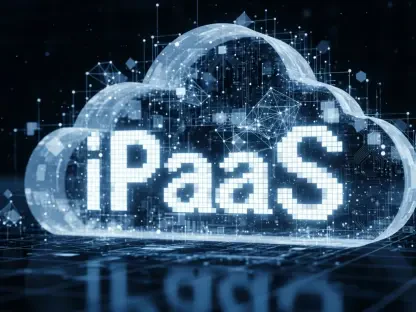Imagine a critical system failure in a sprawling cloud-native environment, where multiple microservices scattered across different platforms are suddenly impacted. Can traditional IT practices manage such chaos effectively? This scenario highlights the urgent need for evolving incident response methods to keep up with the complexities of cloud-native computing. In an era where businesses increasingly rely on cloud-native technologies, the efficiency of incident response becomes crucial. Inefficient response methods can lead to extended downtimes, negatively impacting business operations and customer satisfaction. The story behind leveraging IT service management (ITSM) practices for cloud-native incident response provides valuable insights into optimizing IT operations amidst modern computing challenges.
A Question of Efficiency: Are You Truly Prepared for Cloud-Native Incidents?
As enterprises transition to cloud-native environments, they encounter unprecedented challenges in managing incidents. The question remains: Are organizations equipped to handle the dynamic nature of cloud-native computing? Traditional incident management approaches often fall short in this new landscape, highlighting the need for enhanced strategies.
Cloud-native computing introduces complexities that demand a reevaluation of preparedness. Efficient incident response methods must evolve to address the unpredictable and distributed nature of modern IT infrastructures. Failure to adapt can result in prolonged outages and significant operational disruptions.
Understanding the Urgency: Real-world Impacts and Trends
The shift to cloud-native computing is transforming IT operations, sparking trends that necessitate robust incident response mechanisms. Companies now rely on microservices, containers, and orchestration platforms, creating environments where incidents are intricate and multifaceted.
Real-world examples of companies facing major disruptions due to inadequate incident response highlight the stark importance of evolving practices. Common challenges include visibility across distributed systems, coordinating responses among various teams, and swiftly resolving incidents to minimize impact. These trends underscore the urgency for integrating efficient incident management strategies in cloud-native environments.
Integrating ITSM in the Cloud-Native World
ITSM practices must transform to address the complexities of cloud-native incident management. Traditional systems, designed for monolithic applications, struggle with dynamic and distributed architectures. However, ITSM can adapt, offering a structured approach to managing incidents across sprawling cloud-native environments.
ITSM provides a framework for organizing incident lifecycle management, bringing order to the chaos of cloud-native computing. Successful integrations demonstrate clear workflows that streamline identification, prioritization, and resolution of incidents. By adapting ITSM practices, organizations can more effectively manage disruptions and enhance operational stability.
Bridging ITSM with DevOps and SRE Practices
Automation is at the center of efficient incident response in modern IT environments. Leveraging automation transforms how incidents are managed, reducing response times and increasing overall efficiency. Case studies showcase the benefits of automated workflows in incident creation and resolution, emphasizing quicker recovery and minimized downtime.
Effective incident management also relies on cross-functional collaboration. Breaking down silos between ITSM, DevOps, and SRE teams fosters a culture of teamwork, ensuring rapid and coordinated responses. Experts emphasize the importance of collaboration in building resilient IT frameworks, promoting shared goals and seamless integration of incident management practices.
Cloud Providers: Enhancing ITSM Capabilities
Cloud providers offer critical tools that enhance ITSM capabilities. Services like AWS CloudWatch, Azure Monitor, and Google Cloud Operations Suite provide comprehensive monitoring and logging, essential for effective incident management in cloud-native environments.
Automation services, such as AWS Systems Manager and Azure Automation, streamline incident resolution tasks. These tools enable rapid response and resolution, bolstering ITSM practices with advanced automated capabilities. Integrating cloud provider services augments ITSM frameworks, ensuring efficient and proactive incident management.
Practical Steps to Enhance Incident Response
Optimizing ITSM tools for cloud-native efficiency is vital for effective incident management. Strategies for integrating tools like ServiceNow, BMC Remedy, and Jira Service Management with cloud-native environments include leveraging automation features and enhancing visibility across distributed systems.
Developing a proactive incident management approach is crucial. Incorporating predictive analytics and AI, organizations can anticipate potential disruptions and mitigate their impact before they escalate. Continuous improvement practices, driven by SRE principles, further enhance ITSM frameworks, promoting resilience and operational excellence.
Conclusion
Adopting ITSM best practices for cloud-native incident response is essential for mitigating disruptions. The integration of automation, collaboration, and advanced cloud provider tools transforms how incidents are managed, ensuring rapid and efficient resolution. Looking ahead, advancements in AI and predictive analytics will continue to drive proactive incident management, guiding organizations toward greater resilience and operational stability. Embracing these strategies will be key to thriving in the dynamic landscape of cloud-native computing.









